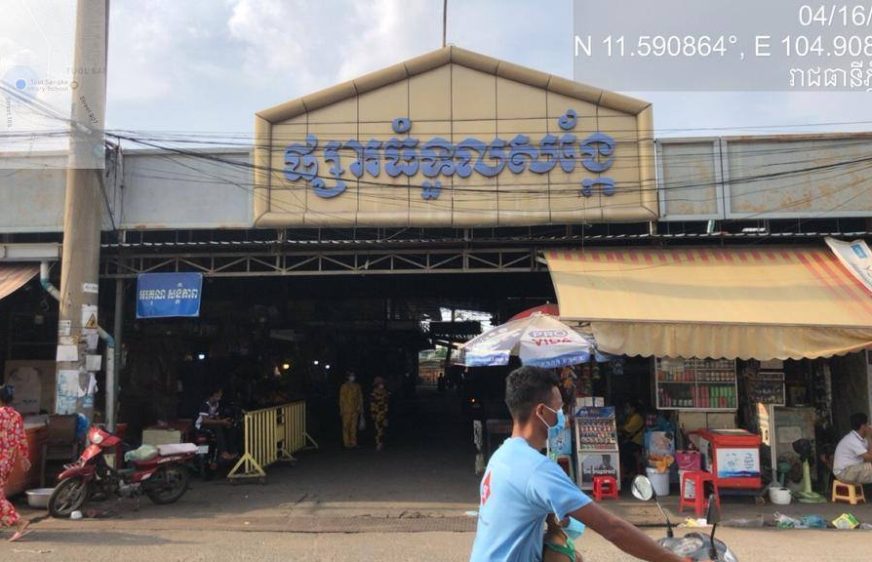Cambodia’s rapid 7.5 percent GDP growth last year came amid ballooning private debt, increased reliance on an uncertain construction boom, and threats to the country’s main exports due to politics, according to recent reports from the World Bank and National Bank of Cambodia.
The World Bank’s Cambodia Economic Update, released on Monday, showed improvements in many areas of the economy, but also contained a few notes of caution:
- Loans from banks and microfinance institutions grew by 24 percent, with their total value now exceeding 100 percent of GDP, or about $25 billion.
- The economy became “increasingly dependent” on the Chinese-driven construction sector, with risks consequently rising.
- The loss of duty-free trade with the E.U. over human rights concerns could slash exports by $600 million, or about 10-25 percent in key categories.
GDP Growth Beats Forecasts
Headline figures exceeded expectations in 2018, with GDP growth reaching a four-year high of 7.5 percent driven by more exports, the World Bank report said.
“Exports burgeoned as external demand, especially in the United States and European Union markets, strengthened,” it said.
The government’s revenue, furthermore, hit a record 22 percent of GDP due to successful tax collection efforts.
Strong domestic demand also propped up the economy, with the import of cars increasing a massive 53 percent year-on-year, according to the report.
Loans and Spending Rise
Increased spending by Cambodians, however, also accelerated hand-in-hand with heavier debt.
For the year, loans from banks and microfinance institutions increased 24.4 percent, and total outstanding loans exceeded 100 percent of GDP at 104.2 trillion riel (about $25 billion), the World Bank said.
“This, however, excludes credit provided by the ‘shadow banking’ system introduced by real estate developers, rental and leasing firms, pawn shops, and informal lenders,” it cautioned. “Therefore, the magnitude of total credit provided to the economy is much greater.”
With the global average ratio of credit to GDP around 104 percent, Cambodians’ indebtedness is not unusual. But considering the country’s “nascent banking sector,” it is “relatively high,” the World Bank said.
The National Bank of Cambodia’s (NBC) Financial Stability Review, released late last month, took a longer view.
Lending to individuals — as opposed to businesses — grew from 16 percent of GDP in 2012 to 57 percent last year, the central bank said, explaining that this was partly due to the increasing availability of land titles as collateral and also implied greater access to credit.
However, loans for “non-income-generating activities,” or “personal essentials,” more than quintupled from 4.4 percent of GDP in 2012 to 22.8 percent last year, the NBC said.
“While the quality of credit to individuals has not yet been of immediate concern, an accumulation of individual debts going forward warrants closer monitoring,” it said.
Construction Boom Prompts Caution
In recent years, the World Bank has likened the booming construction sector to a “bubble,” but has noted that with mostly foreign money at stake, the Cambodian economy was not at great risk.
In its latest report, it said related industries — such as the manufacture of building materials, furniture, metals and plastics — were flourishing amid the boom, which was driven largely by Chinese investment.
This deeper involvement, however, implied greater risks to the economy, it said.
“The economy has been increasingly dependent on the construction sector, consequently risks associated with construction boom have been rising,” the World Bank said.
“Construction and real estate typically are more prone to boom and bust cycles and a slowdown in FDI inflows may then unmask the banking sector’s exposure and vulnerabilities,” it added.
Politics Threatens Exports
The E.U. announced a review of Cambodia’s access to the “Everything But Arms” (EBA) trade deal in February, demanding the restoration of democratic and human rights after the Supreme Court dissolved the main opposition party.
About 39 percent of Cambodian exports are shipped to the E.U. A further 30 percent goes to the U.S., which is also reviewing duty-free trade with Cambodia over political concerns.
In its report, the World Bank estimated that customs duties of 16 percent for footwear and 12 percent for garments could cut Cambodian exports to the E.U. by about $129 million and $320-381 million for each category of product. The loss would amount to about 25 percent and 9-10 percent of current exports to the E.U., respectively.
Adding a further decline of $65-144 million for milled rice, the World Bank said the impact of losing the EBA’s duty-free access could be at least $514-654 million. It did not offer an estimate for the impact on bicycles, the third-largest export category.













